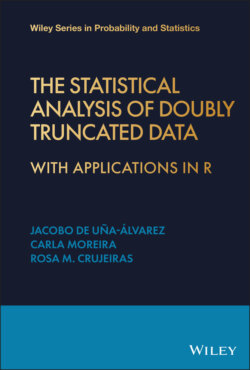Читать книгу The Statistical Analysis of Doubly Truncated Data - Prof Jacobo de Uña-Álvarez, Prof Carla Moreira - Страница 15
1.2.3 Truncation vs. Censoring
ОглавлениеAt this point, the reader may be curious about the difference between truncation and censoring. Right‐censoring is a very well known phenomenon in Survival Analysis and reliability studies, among other fields. It happens when the follow‐up of a given individual stops before the event of interest has taken place. In such a case, the observer only knows that the target variable is larger than the registered value, which is referred to as censoring time. A sample made up of real and censored values is typically analysed by the Kaplan–Meier estimator (Kaplan and Meier, 1958), which corrects for the fact that some of the recorded values for are smaller than the true ones. With truncated data, every value in the sample corresponds to a true observation of ; however, the distribution of the observed values may be shifted with respect to the true one due to the truncation event. This difference between truncation and censoring suggests that specific methods to estimate the target distribution under random truncation should be employed. Indeed, Woodroofe (1985) provides a deep analysis of one‐sided truncation, introducing the original idea of Lynden–Bell (1971) as a nonparametric maximum likelihood estimator (NPMLE) of the probability distribution in that setting. The estimator in Woodroofe (1985) is a particular case of the estimator corresponding to doubly truncated data, on which this book is focused.
